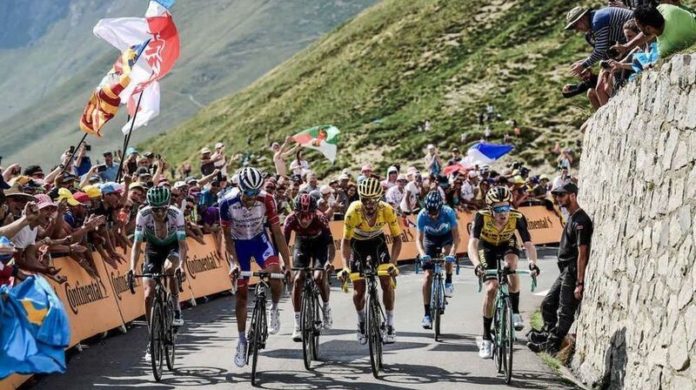Tour de France Controversies
The Tour de France is a 23-day bicycle race that travels in various stages around France, traveling from the mountains in the south-east of the country through to the finish line in the capital of Paris. The annual race has been organized every year since 1903, apart from two periods during the first and second World Wars due to the violence that was gripping Europe during that time. As of 2020, there have been 107 tours, and the race is considered one of the three biggest bicycle races around the world alongside the Giro d’Italia and the Vuelta a Espana.
Due to the different parts that come together to compile the Tour de France, the Tour awards a variety of riders by the discipline they excelled at. While most riders wear jerseys to signify their teams and sponsors, there are also celebratory yellow, green, polka dot, and white jerseys that are awarded during the tour. The yellow jersey is awarded to the overall leader of the tour, the green one is given to the fastest sprinter of the race, the polka dot jersey is given to the rider who leads the tour in the mountain stages of the race, and finally, the white jersey is given to the best-placed rider who is under the age of 26 on the tour.
Creating the Tour
The Tour de France was first created in the early 20th century by French businessman Jules-Albert de Dion. De Dion became famous during the Dreyfus Affair, where a Jewish General of the French Army was accused of selling secrets to the German. The trial was littered with anti-semitism as Dreyfus’ Jewish identity was heavily played as a big part of the accusations. Dreyfus had numerous supporters in French society including the editor of Le Velo, a French sporting newspaper.
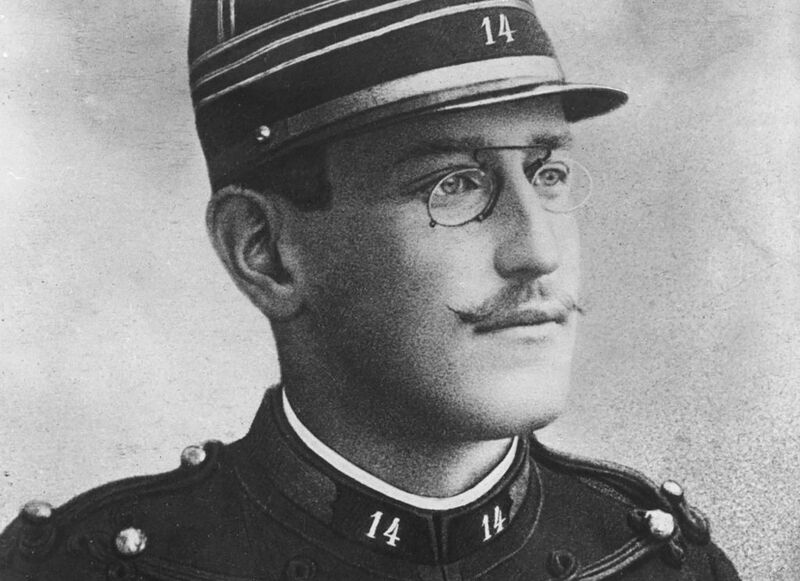
The trial of Alfred Dreyfus became extremely newsworthy, akin to the trial of OJ Simpson many decades later. The arrest and subsequent trial were incredibly divisive in French society, with many people finding themselves as either pro-Dreyfus or anti-Dreyfus during the trial. De Dion was fervently in the anti-Dreyfus camp during and after the trial.
Dreyfus Affair to Tour de France
It is incredible to think about the chain of events that forever links the Dreyfus Affair, that rocked France in the 19th and 20th centuries to a popular bicycle race that continues today. De Dion wasn’t simply a regular member of society but was from an aristocratic family that was a big part of pioneering the automobile industry in the country.
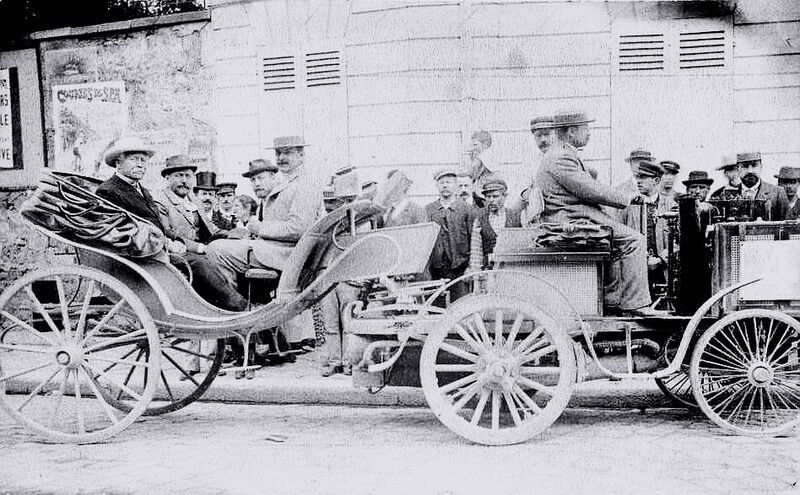
In late 1894, Dreyfus was found guilty after a controversial trial in which the prosecution was accused of basing its case on flimsy evidence. Dreyfus was sentenced to prison, as the death sentence for political crimes had been outlawed half a century earlier. He was eventually re-tried and pardoned by President Loubert, which resulted in clashes between the pro and anti-Dreyfus camps.
The Schism in French Life
The fractures and fallout of the highly political Dreyfus affair began to infect other aspects, including sports. This escalated when President Loubert appeared at the racetrack in Paris, sparking a public fracas between members of the two camps, including De Dion.
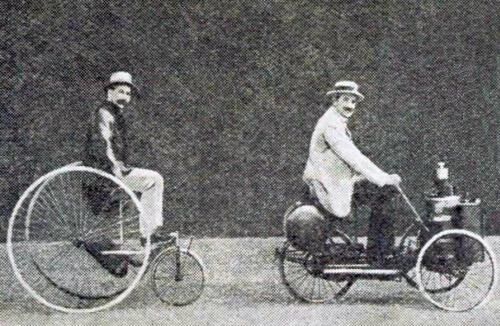
The brawl saw several members of French elite society arrested for attempting to kill the president, with de Dian spending time in jail for his role in the affair. According to reports at the time, de Dion struck President Loubert in the head with his cane at the racetrack. Aside from the prison sentence, of 10 days, de Dion was also forced to pay a fine of 100 francs.
Breakaway Paper
Matters for the anti-Dreyfus camp got even worse as the major sports paper of the time Le Velo took a firm stance in support of Dreyfus. This was led by Pierre Giffard, who was the head editor of the paper. As a response to the editorial line of the paper, de Dion and other French industrialists withdrew their advertisements from Le Velo.
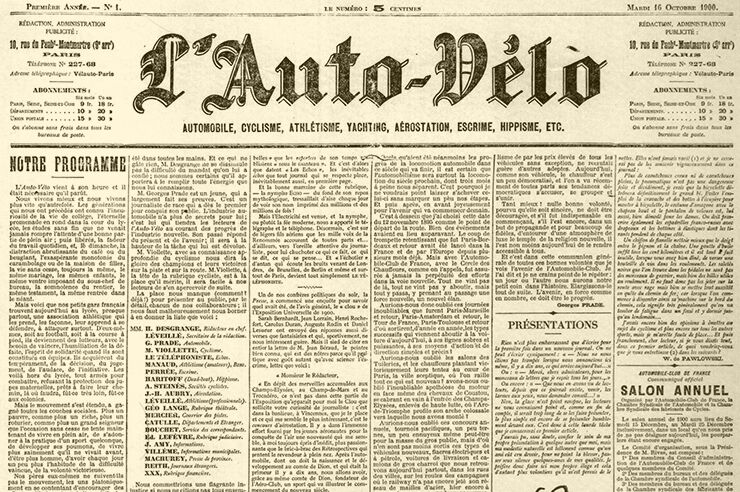
De Dion, and other anti-Dreyfusards Adolphe Clement, and Edouard Michelin created L’Auto-Velo as a rival paper. In 1900, L’Auto-Velo was forced to change its name to L’Auto as a Parisian court ruled the name to be too close to the original paper.
From Journalism to The Tour
After the establishment of L’Auto, the three wealthy industrialists set about undermining and digging into the popularity of the established Le Velo paper. While Le Velo famously reported on bicycle races and even sponsored races as a way of publicity, L’Auto was forced to outdo their rivals if they wanted to survive.
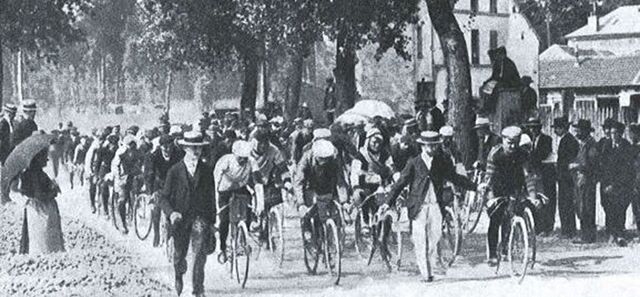
To this end, one of the editors came up with the idea of a series of races that would cross the country. The coverage of the tour would be exclusive to the paper. In 1903, with L’Auto struggling to increase its circulation, the Tour de France was created. The first winner was a French cyclist by the name of Maurice Garin. Garin’s prize money for his win was over 6,000 francs which is worth over $40,000 US. Meanwhile, the paper sold over 100,000 copies thanks to the tour and has gone on to become one of France’s biggest sporting papers.
The First Tour
The winner of the first tour, Maurice Garin, has since been accused of cheating his way to winning the tour. According to Tour historians, the prize money was too tempting for the creative Garin who sought to subvert the few rules in place into his favor. The first rule of the tour and the one Garin took the greatest advantage of was the fact that teams weren’t allowed. Instead of declaring a team, Garin rode as part of a group called La Francaise, which rode with Garin on each of the stages.
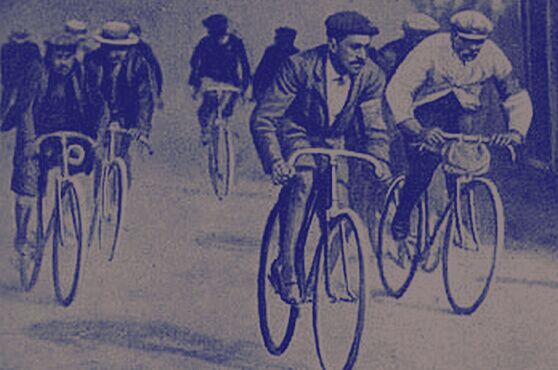
Despite having an unauthorized group in the race, Garin owed members of his team no loyalty. According to historians, Garin treated fellow group member Fernand Augereau with vicious hostility during the fifth leg of the tour. Augereau challenged Garin in the race, leading the front runner to order the fellow racer to be knocked off his bike. After catching up a second time, Garin ordered his team to knock over their teammate again. To ensure he wouldn’t be challenged, Garin got off his bike and intentionally broke Augereau’s bike to ensure that he would not be able to catch up a third time.
More on the First Tour
Despite many witnesses seeing Garin’s treatment of his rival, the incident went unreported in L’Auto’s coverage of the tour. This wasn’t the only event of foul play that occurred during the first tour, and especially not to the unfortunate Augereau. After seeing his bike destroyed, Augereau continued after borrowing the bike of a spectator.
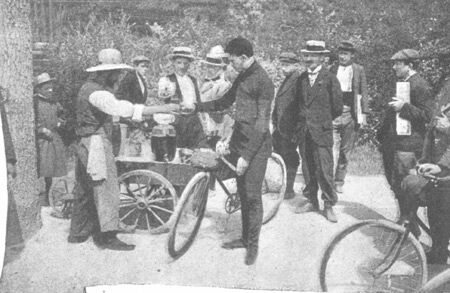
Despite his best efforts, the racer still failed to finish the leg after both wheels on the bike blew out before the end of the race. While it wasn’t necessarily caused by this, the race was littered with accusations that riders had placed tacks, nails, and sharps rocks on the road sabotaging other riders.
Sabotage
Before performance-enhancing drugs became all the rage on the Tour de France, another tonic was used by riders to bolster their chances of winning. The first-ever Tour de France was marked by competitors using poison to try and take out their opponents and stop them from winning.
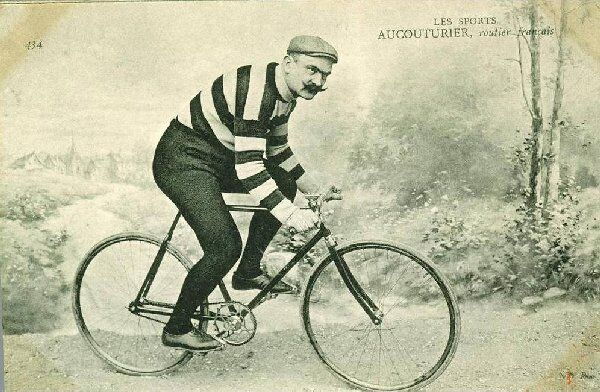
Once of Garin’s biggest rivals during the race was the French rider Hippolyte Aucouturier. Aucouturier had won the Paris-Roubaix race earlier in the year and was one of the favorites in the inaugural Tour. After Garin won the first leg of the tour, Aucouturier won the second and third legs but began feeling ill and was forced to pull out of the race. The sickness, which some believed to be food poisoning, apparently occurred after the racer drank lemonade from a stranger.
The Second Tour
If there was any thought that the second edition would be any less violent than the first was mistaken. The second tour was not only filled with similar incidents of sabotage but stepped up a notch from the first time around. Maurice Garin, who infamously won the tour in 1903 was one of the favorites in the field of 88 riders.
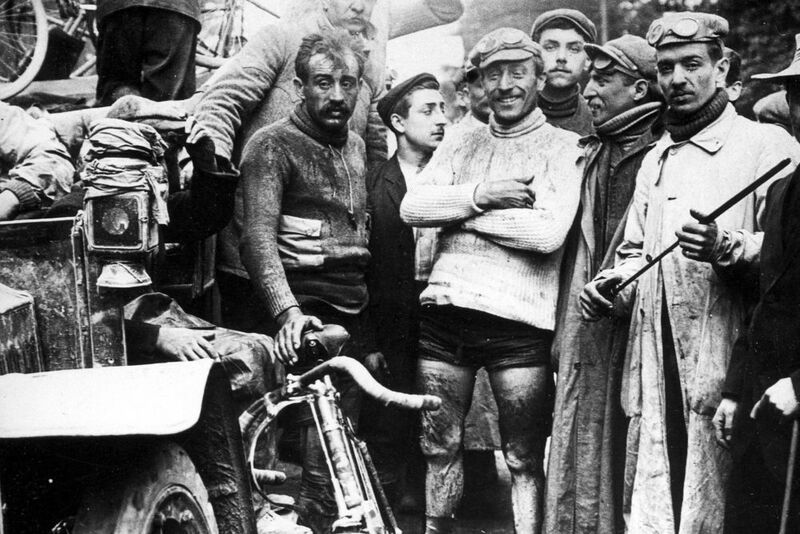
The biggest change appeared to be that more acts of violence were beginning to emerge from passionate spectators, as opposed to being between the riders themselves. On one of the legs, fans blocked the road and sought to attack the riders as they passed, including Maurice Garin and his brother Cesar. The fans reportedly supported Antoine Faure, who hailed from the nearby city of Lyon. Despite only winning the first stage, Garin would narrowly finish the 1904 Tour De France ahead of French rider Lucien Pothier, and Maurice’s brother Cesar Garin.
Disqualification
While Garin initially won his second straight Tour de France in 1904, this is not reflected in the history books. After an investigation by Union Velocipedique Francais, the French Cycling Federation, disqualified Maurice Garin, Lucien Pothier, Cesar Garin, and Hippolyte Aucouturier for having cheated during the tour to get an advantage. Instead, the tour was awarded to fifth place, Henri Cornet. Remarkably, Cornet was just 19-years-old when he participated and won the Tour.
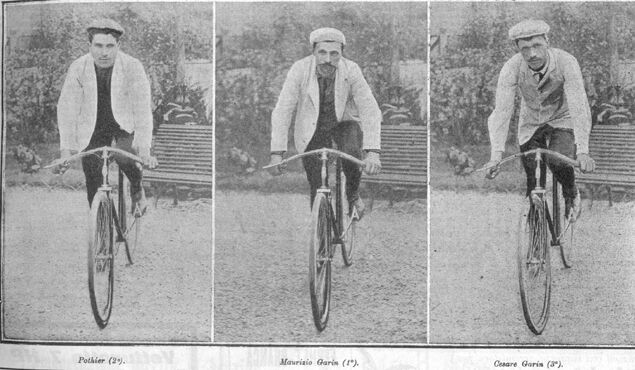
What could Garin, Pothier, Garin, and Aucouturier possibly have done to be disqualified from the tour? According to reports from the race, and investigations into claims from other riders, the riders were being assisted by cars. The claim was that the racers would hold a cork in their mouth while riding, the cork was attached to a wire which fed into a leading car, allowing the car to do much or the racing and merely pulling the rider along with minimal effort. Philippe Jousselin and Camille Fily were also stripped of their 7th and 9th place finishes after the investigation as well.
Tour in Disarray
Following the 1904 Tour de France, the future of the race looked in peril. The head of the tour and one of its main organizers claimed that the race would never run again. Henri Desparange, who was the editor of De Dion’s L’Auto newspaper, wanted to stop the race following the scandal that saw several riders disqualified after the race. Desparange had an important position as the director of the tour.
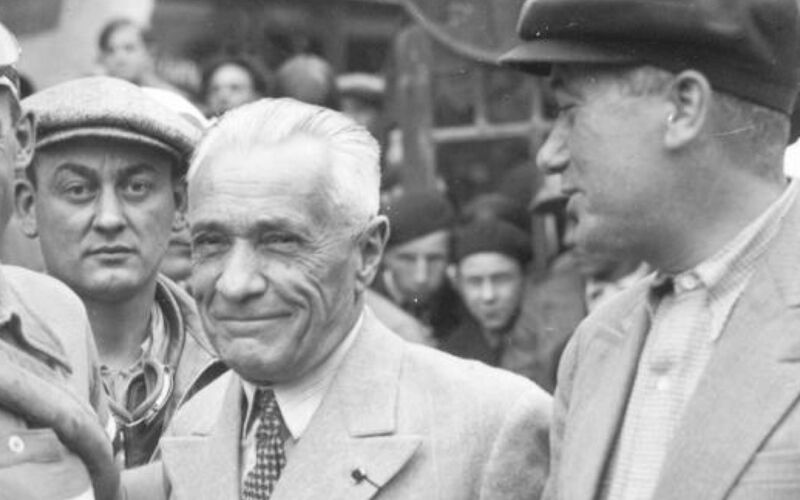
However, Desparange would eventually change his mind after the organizers agreed that changes to the tour needed to be made. The race was then switched to a points-based system to allocate who the winner would be. The points-based system was used for the Tour de France from 1905 to 1912 when it was abandoned in favor of returning to the time system.
Diets on the Early Tours
Today the Tour de France is an intense athletic accomplishment that requires a mix of intensive training and a healthy diet to not only win the competition but to also survive the grueling conditions along with the race. That certainly wasn’t always the case, especially when it came to the earlier days of the tour.
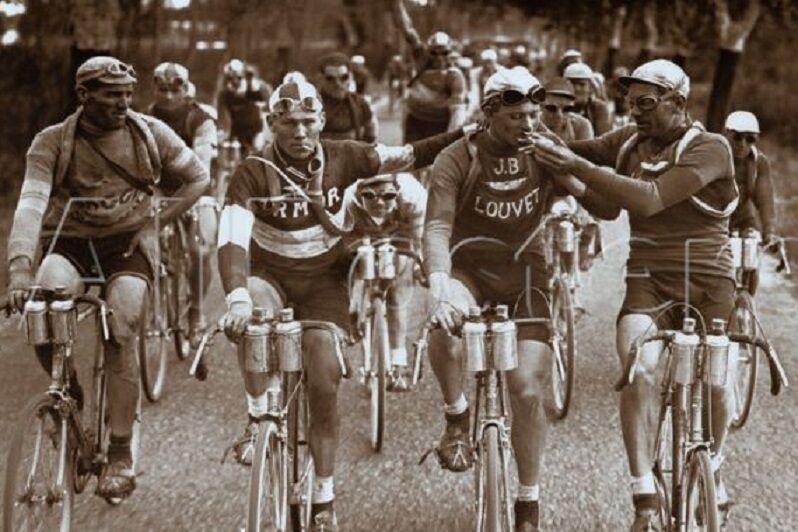
While the intensive schedule would call for light meals, that doesn’t make it too heavy, and high enough in energy to allow them to keep pedaling throughout the course. However, riders in the first races regularly ate full meals of heavy carbs, which wouldn’t have made it easy to ride with. Outside of their meals, the riders also regularly drank wine throughout the race and smoked cigarettes. Not exactly an ideal situation when riding for over 90 hours in grueling conditions.
Crazy Crowds
In the modern Tour de France, crowds travel from all around the world to line the roads where riders will pass. Some fans have become infamous for their antics to support or throw riders off their game. Modern fans will often come to the race dressed up and run alongside the riders and taunt them from the side of the road. However, the modern fans are still far and away better behaved than what Tour was previously like.
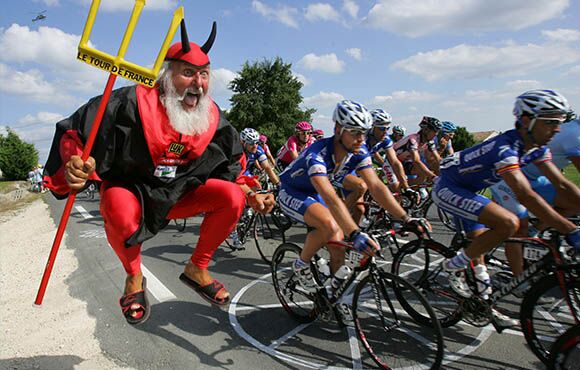
Before every section of the Tour was filmed and televised, there were several instances of fans attacking riders to help their favorites win. In the 1904 tour, Maurice and Cesar Garin were attacked by fans but this was certainly not an isolated incident. Other riders on early races reported fans trying to attack them with knives, sticks, and rocks.
Continued Sabotage
Despite several riders receiving life-time bans from the Tour de France after the 1904 event, it didn’t seem to end the cheating and sabotage that plagued the first two years of the event. While the amount and blatancy of cheated decreased, several riders were still effected.
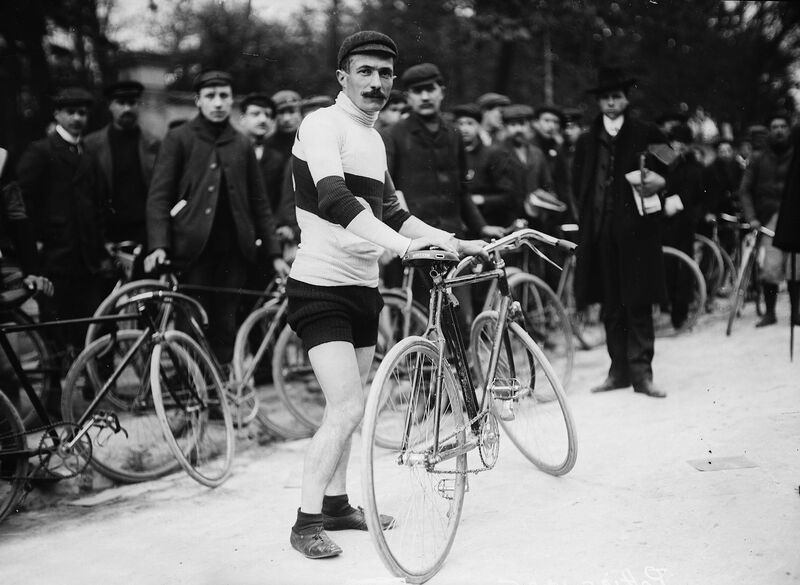
The most significant action was taken during the first stage of the race. During the stage, every rider, apart from Jean-Baptiste Dortignacq, had their tires punctured. The cause of all the punctured tires turned out to be nails that had been scattered along the road. According to reports after the race, an estimated 125 kilograms of nails were scattered along the track during the race to puncture as many tires as possible.
Temporary Suspensions
Since 1903, the Tour de France has been an annual tradition, aside from two periods between 1915 to 1918, and 1940 to 1946. The tour was called off during those periods as a result of World War I and World War II. During World War II, the race was not run during Germany’s occupation of France until their liberation later in the decade.
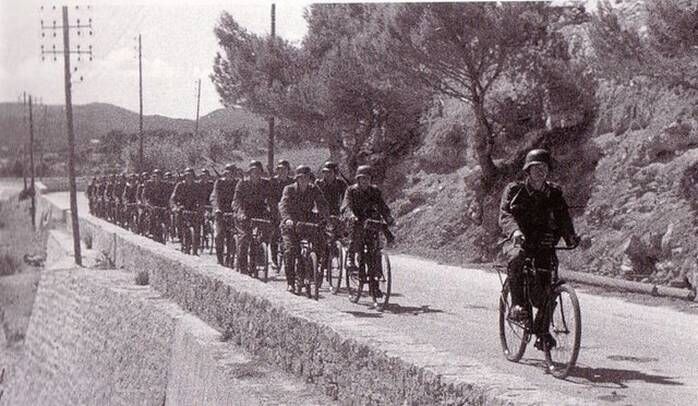
Those two periods were the only times that the cycling race was not held. Due to the 2020 COVID-19 Pandemic, the race’s start was delayed from its regular start in July to the end of August. The 2020 edition of the race marked the first time since 1946 that the Tour de France was not held in July. The 2020 race ran from the 29th of August and finished on the 20th of September.
Deadly Race
Given the toughness of the race, and the lack of safety precautions it’s not surprising that the Tour de France has resulted in the deaths of many competitors. Four cyclists have died while participating as a part of the tour, three of those during stages. However, Adolphe Heliere died during the 1910 race. Helier drowned while swimming on the 14th of July, which was a designated rest day for the competitors in the French coastal city of Nice. Despite the fatality, the tour continued on the next day as the remaining competitors raced from Nice to Nimes.
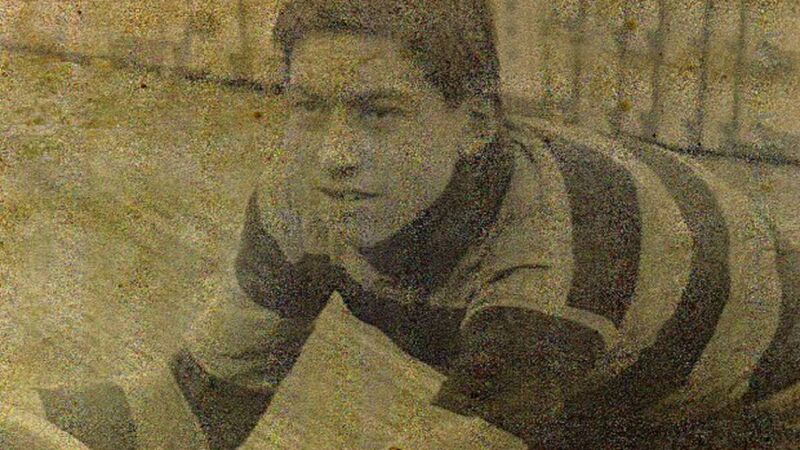
It isn’t just competitors that have died during the tour, as 27 spectators have died in various incidents during the tour. On the 1958 Tour de France, Andre Darrrigade collided with one of the officials near the finish line of the tour. While Darrigade suffered from a cracked skull and broken ribs, the official died of his injuries a week and a half later.
Disqualifications
Over the 100 year history of the Tour de France, numerous cyclists have been disqualified from the tour and been handed bans for a variety of infractions. While the ways that cyclists have attempted to cheat, or hide their cheating, has gotten more sophisticated than how bad it was during the early 20th century, some of the stories are pretty amusing.
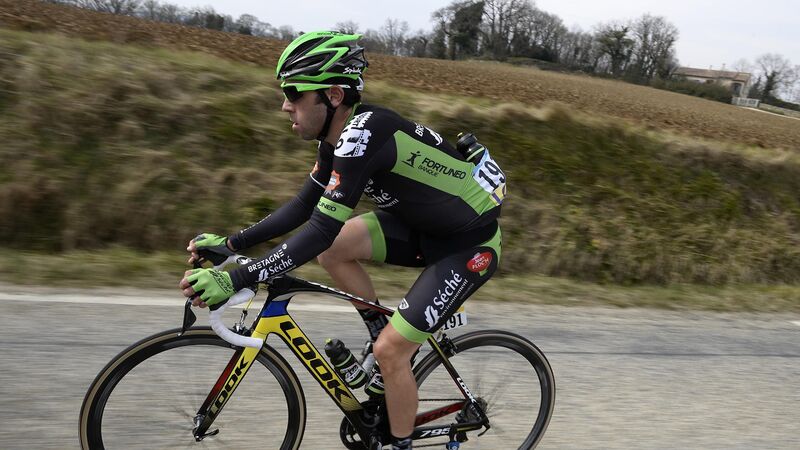
Outside of the cyclists who have been disqualified for performance-enhancing drugs, because they will come later. Several cyclists have also been disqualified for other reasons. Aside from the group of nine riders that were disqualified in the 1904 Tour de France for being pulled along by wire, Eduardo Sepulveda was banned in the 2015 tour after breaking his chain on the 14th stage of the race. Sepulveda was then given a lift of 100 meters to his own team’s car where he was able to take a replacement bike. As a result of the lift, Sepulveda was kicked off of the tour.
Michel Pollentier
Michel Pollentier was a Belgian professional rider that won the 1977 Giro d’Italia and was one of the favorites to win the general classification of the 1978 Tour de France. Pollentier had finished 7th overall in the 1974 and 1976 editions of the Tour de France and capped off an exceptional 1977 with a sixth-place finish in the Vuelta a Espana. Unfortunately, Pollentier was disqualified during the 1978 Tour de France after finishing the 16th stage of the race and taking the Yellow Jersey.
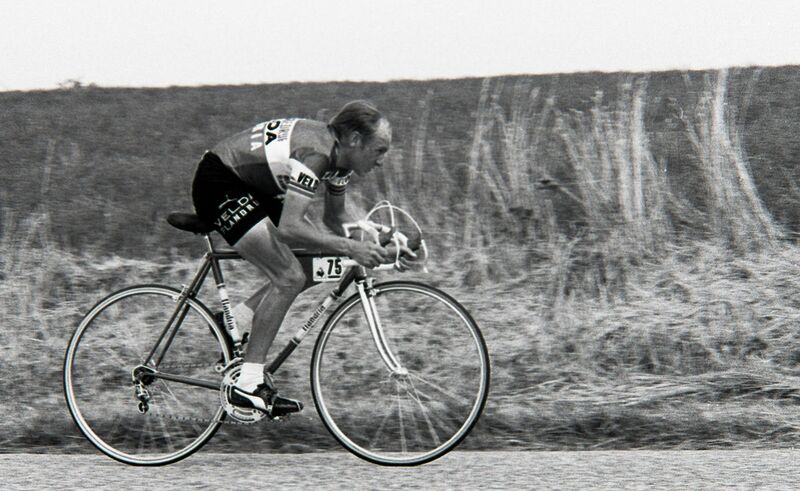
Following the race, Pollentier was required to submit a urine sample for a drug test after the stage. Instead of submitting a sample, Pollentier returned to the hotel and was only located 2 hours later. At the same time, a fellow rider had been caught trying to submit a urine sample using a condom strapped into the rider’s armpit. Pollentier was then found to have submitted the same urine sample, which belonged to one of Pollentier’s teammates.
PDM-Concorde
Controversies in the Tour de France usually circulate about the actions of the individual riders rather than being team-wide. That certainly wasn’t the case with Dutch team PDM-Concorde in the 1991 Tour de France. Heading into the tenth stage of the race, the team was well placed and leading the Team classification of the race. At the time, Erik Breukink, Sean Kelly, and Raul Alcala were all in the top ten of the general classification, with Breukink 12 seconds off of the leader. During the stage, three riders failed to finish and the remaining team members were also sick as well and forced to pull out.

While rumors circulated that the illnesses were related to a doping scandal, the team denied this and claimed that the riders were suffering from food poisoning. It was later revealed that the team’s medics had been injecting the riders with Intralipid, a liquid-food fed to comatose patients. While the tactic is legal, it was still completely unadvisable and backfired on the company. The team would eventually fall out of the tour in 1992 and sold their franchise to Festina.
Tyler Hamilton
In the 1990s, American cyclist Tyler Hamilton was a part of the US Postal Service team that would later include disgraced riders, Floyd Landis and Lance Armstrong. Hamilton was an incredible road racer, helping Lance Armstrong win his 1999, 2000, and 2001 Tour de France victories. Hamilton was known for his abilities during the time-trials and the mountain stages as he excelled in those fields. After breaking away from the US Postal Service Team, Hamilton came second at the Giro d’Italia and finished 4th overall in the 2003 Tour de France.
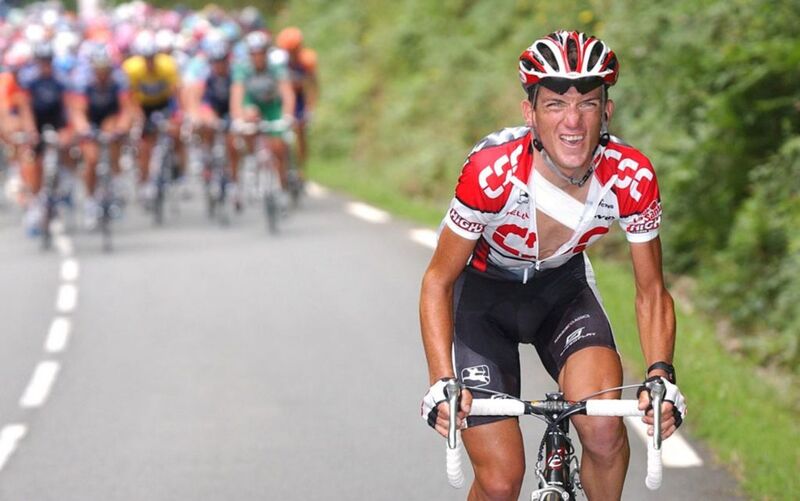
Outside of the Tour de France, Tyler would win the Gold Medal for the USA at the 2004 Olympic Games in Athens. However, after the race, Hamilton found himself under investigation for using doping techniques and masking tactics, such as swapping out his blood. After the discovery, Hamilton wrote an explosive book that revealed many of the Tour de France’s dirty secrets. The book and Hamilton’s subsequent media appearances brought up a dirty underbelly of performance-enhancing drug usage and routine blood transfusions to avoid detection.
Festina
Following the controversy and collapse of the PDM-Concorde team, the franchise was sold to Swiss watch brand Festina. The team brought in former PDM-Concorde rider Sean Kelly as one of their star racers. In the 1994 Tour de France, Festina team members Luc LeBlanc and Richard Virenque finished 4th and 5th respectively, helping Festina to win the team classification of that year.
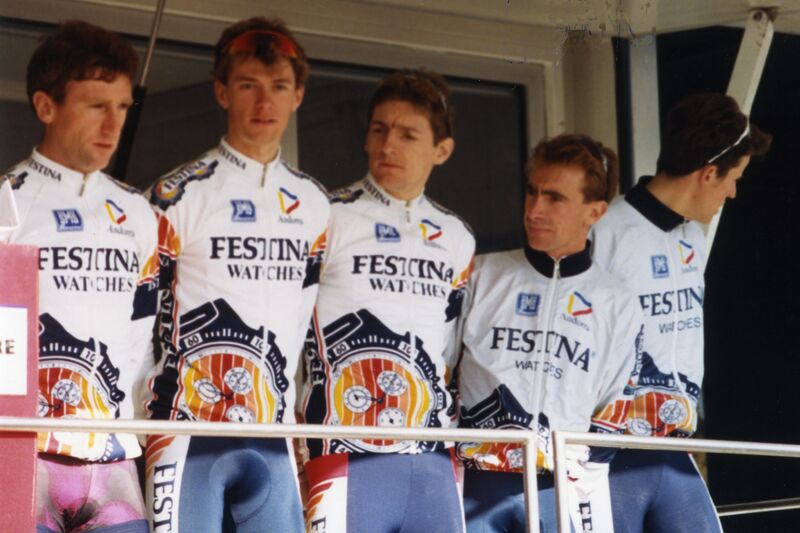
A few years later, in the 1998 Tour de France, Richard Virenque was one of the favorites to win the general classification. That year’s tour began in the city of Dublin before moving to France on the third stage of the tour. Before the start of the tour, a Festina team car was stopped on the Belgian-French border and a search of the car uncovered large amounts of performance-enhancing drugs. The discovery and subsequent arrest led to raids on Festina’s headquarters and led to Festina being expelled from the race. Virenque attempted to get the ban overturned but was unsuccessful.
Floyd Landis
Floyd Landis was an American rider who was a part of the famous US Postal team alongside Lance Armstrong. Landis famously won the 2006 Tour de France, becoming the first person in 10 years to win the Tour that wasn’t named Lance Armstrong. Landis would receive a ban from cycling in 2007, and was able to return in 2009, but would retire from cycling in 2011 after failing to find a team.

Following the 2006 Tour de France, Landis’ urine was examined and tested positive for elevated levels of testosterone. Despite the positive results, Landis maintained his innocence and stood by the fact that his back-up sample would be clear and denied any wrong-doing. In a symbol of solidarity Landis’ team Phonak declared that if Landis B sample was also positive that he would be fired from the team. Despite Landis’ bravado and declarations of innocence, the second result also showed elevated levels of testosterone in his blood. According to his physician, the level was almost three times higher than the maximum allowed amounts of testosterone.
Alberto Contador
Spanish cyclist Alberto Contador is one of only seven riders to have completed a sweep of the three Grand Tours of cycling. Contador won the 2007 and 2009 Tour de France, the 2008 and 2015 Giro d’Italia, and 2008, 2012, and 2014 Vuelta a Espana. Contador also won the Velo d’Or, or Golden Cycle award given to the best rider in 2007, 2008, 2009, and 2014. Contador also won the 2010 Tour de France and the 2011 Giro d’Italia but those results were later wiped from his record, alongside his 5th place finish in the 2011 Tour de France.
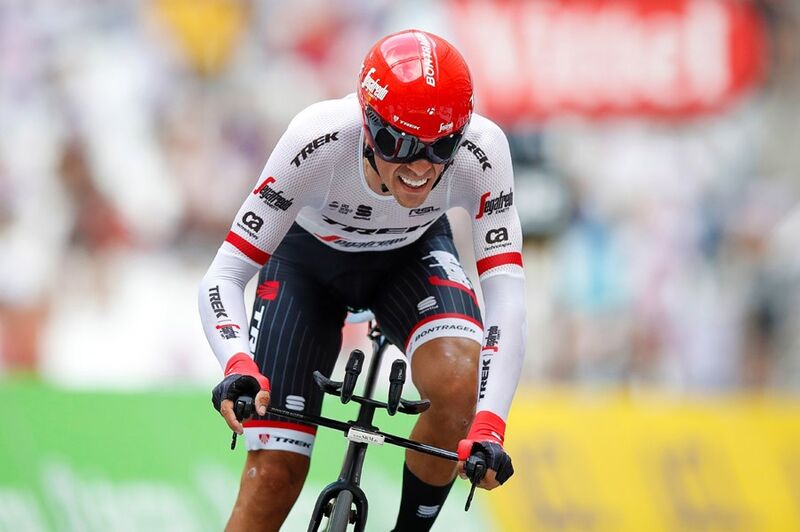
Unfortunately for Contador, a few weeks after he won the 2007 Tour de France, it was revealed that he had tested positive for a banned stimulant called Clenbuterol. Contador denied taking the drug and claimed that it came to be in his system as a result of it being in the meat that he had eaten. Contador was suspended for the rest of the 2011 season before making his return to cycling by winning 2012 Vuelta a Espagna. Contador controversially returned to the Tour de France in 2013 finishing 4th in the general classification. Contador would eventually retire from cycling at the end of the 2017 season.
Tom Simpson
The 1967 Tour de France was held during a heatwave, making the already difficult race even harder. Before the thirteenth stage, Simpson drank brandy to help with stomach pain he was suffering and had taken amphetamines to get through the race. After managing most of the climb up Mont Ventoux, Simpson collapsed and was airlifted to a hospital.

Upon arrival, he was pronounced dead. Simpson was found to have amphetamine tablets in his pocket and his system during the autopsy. The death shined a negative light on drug usage during the Tour de France, as well as the negligence of having a rider continue in light of poor health. While many reportedly advised Simpson to stop racing, a lot of pressure was applied by Simpson’s manager.
Lance Armstrong
It would not be an adequate list of Tour de France controversies without mentioning Lance Armstrong. Armstrong vocally defended himself as being clean during his era of domination over the Tour de France. From 1999 to 2005, Armstrong dominated the competition winning 7 straight Tour de France races. The achievement was considered even more spectacular considering he had been diagnosed with testicular cancer in 1996.
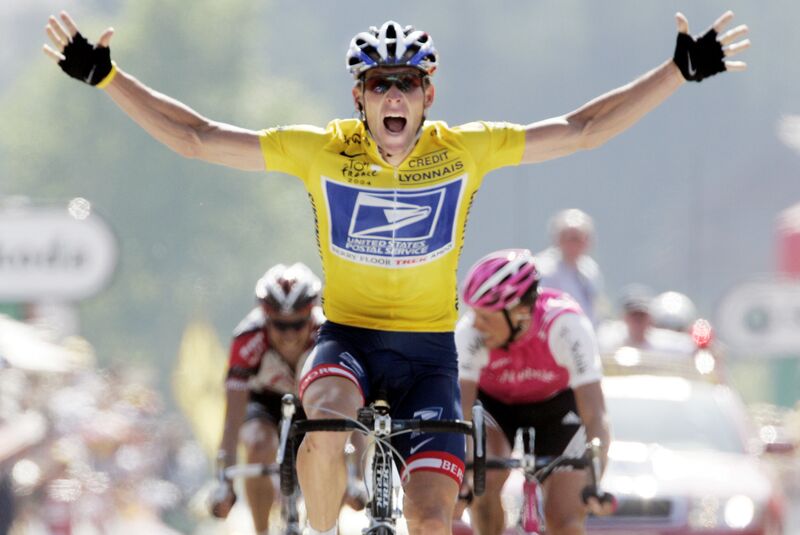
During his career, and in the aftermath of his retirement, Armstrong strenuously defended himself against accusations that he took performance-enhancing drugs. After years of accusations, and defending himself in court, Lance Armstrong confessed to taking part in a massive doping operation up to his 2005 retirement. As a result of the confession, Armstrong was stripped of his Tour de France victories, as well as his 3rd place in 2009 Tour de France.

